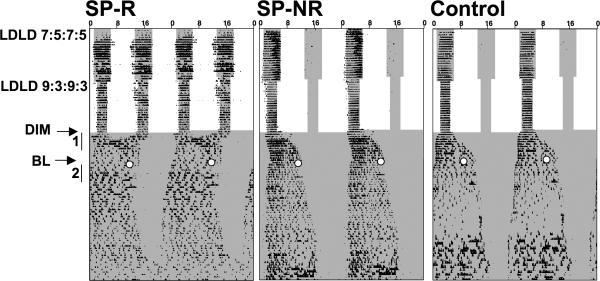Figure 1.
Representative double-plotted actograms illustrating the lighting conditions to which Siberian hamsters were exposed. Changes in internal shading represent changes in lighting conditions, with dim nighttime illumination present throughout. Wheel-running rhythms (scale 0 to 75 wheel revolutions/6 min) were recorded after hamsters were transferred to LDLD and released into constant DIM illumination (indicated by DIM and arrow on left). After two weeks under constant DIM, hamsters were provided 15-min bright light pulses (indicated by BL, arrow at left, and white circle within actogram). Numbered sections of record indicate intervals used to measure changes in activity duration after release into DIM (1) and after bright light pulses (2). Note that the SP-R hamster, like all other SP-R hamsters, displays a bifurcated rhythm with an activity component in each scotophase starting on Day3 of LDLD; whereas the SP-NR and control hamster, like the majority of hamsters in these two groups, fail to display two activity components for the entire duration of LDLD.

